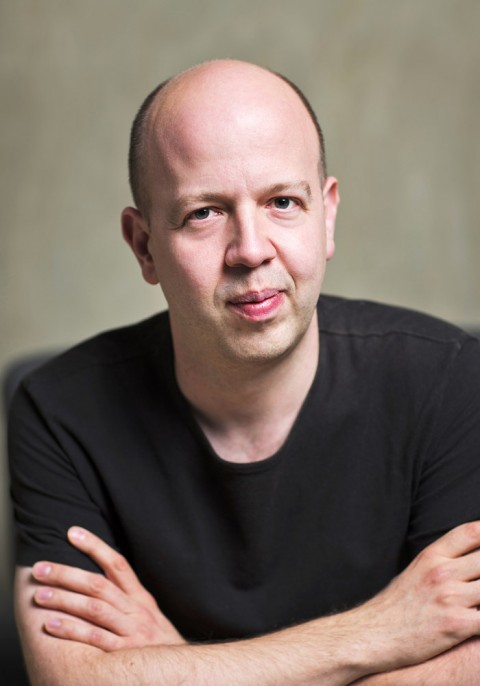Worlds cohere in Chamber Music Society’s far-flung program

Huw Watkins’ Piano Quintet was performed in its U.S. premiere by the Chamber Music Society of Lincoln Center Friday night.
Friday’s program of the Chamber Music Society of Lincoln Center at Alice Tully Hall looked on paper about as heterogeneous as one could imagine. Debussy the French impressionist. Khachaturian the Soviet-Armenian folklorist. Huw Watkins the contemporary Brit with neo-Romantic leanings. And Brahms.
But looking and listening are different things. In the event Friday night, something about the chamber-music ethos itself, and this repertory company of musicians dreamed up by William Schuman and Charles Wadsworth 50 years ago this season, made all those far-flung composers seem engaged in a common enterprise.
Enhancing the evening’s all-in-the-family feeling was the presence, among the players giving Watkins’s Piano Quintet its U.S. premiere, of the composer’s brother, cellist Paul Watkins.
Unexpected musical connections between the works emerged as well. Of course, one shouldn’t be surprised when any 20th– or 21st-century composer dips into a bit of Debussy for a fluid passage or a drifting harmony. One could even say that Brahms got there first with some floating moments in the second movement of his String Sextet No. 2 in G major, Op. 36.
As for the French master himself, he had moved on from lily ponds and sunken cathedrals by 1915, the year of his Sonata for Cello and Piano, a spare, neo-Baroque piece sensitively performed Friday by cellist Watkins and pianist Gilles Vonsattel. In three concise movements—Prologue, Serenade, and Finale—the players articulated the composer’s wayward thoughts elegantly, engaged in whimsical dialogue with each other, and wrapped it up with some quick flourishes. Until that extroverted finish, Watkins and Vonsattel gave the ideal chamber impression that they were performing for each other and the rest of us were just listening in.
According to the program notes by Richard E. Rodda, the instrumentation of Khachaturian’s Trio for Clarinet, Violin, and Piano (composed in 1932) was meant to suggest the timbres of Armenian folk instruments in the wind, string, and dulcimer families. “Suggest” would seem to be the right word, as the plush tone of Vonsattel’s piano and David Shifrin’s clarinet, and the silver thread of Paul Huang’s violin, hardly resembled anything in the village band, and Khachaturian’s score used folk elements discreetly.
In the first movement’s lamenting melody, Shifrin’s room-filling tone obscured the violin at first, but their balance improved as they elaborated the theme over plush piano chords. The players caught the fleeting moods of the second movement, alternately scherzando and reflective, its intricacy and understatement recalling the Debussy sonata heard earlier. A low-pitched, artless-sounding clarinet tune was the basis for the dance-variations finale—still not blatantly folksy, although it could have used more of a boost from Vonsattel at the piano, whose playing was always well-shaped but a bit gingerly compared to that of his colleagues.
The very phrase “piano quintet” brings thoughts of Brahms, but Huw Watkins’s new piece (a co-commission of the Chamber Music Society of Lincoln Center and London’s Wigmore Hall, where it premiered last April) emphasized color shading rather than two-fisted pianism. Vonsattel’s watery piano sparkled, rippled, and dripped through the work’s three movements. In contrast, Watkins returned often to that favorite timbre of British composers, massed string instruments bowing robustly together.
Besides the piano cascades, the elaborate first movement introduced a persistently rocking figure in iambic rhythm (ta-dum, ta-dum) that would loom large in the thoughtful second movement. Both movements offered attractive solos, well delivered by the string players: violinists Paul Huang and Alexander Sitkovetsky, violist Richard O’Neill, and cellist Paul Watkins. The volatile finale swung between biting marcato and feathery leggiero episodes as a chirpy tune danced its way to a last crescendo and a sudden finish.
The lively and effective new piece received a warm response from the audience. The composer came onstage to acknowledge the applause and gave his brother a hug for good measure.
Brahms’s G-major Sextet was published around the same time as his Piano Quintet, but the latter’s roots were in his Sturm-und-Drang youth, while the Sextet represented a step toward the mature, disciplined Brahms of the symphonies. Not yet disciplined enough, however, to hold the four-movement piece to much under 40 minutes, twice the length of the longest piece on the concert’s first half.
A string ensemble consisting of the above players from the Watkins piece, plus violist Matthew Lipman and cellist Nicholas Tzavaras, did its best to give this lengthy work, with its bottom-weighted sonority and introspective content, some fresh impact and audience appeal.
The first movement’s opening bars wove some magic out of a mix of melodies floating over a breeze-like murmuring trill, and crisp entrances drove the full-bodied Allegro exposition to a forte passage on the name (spelled out in notes) of one of the bachelor composer’s lost loves. The presence of this in-joke, or rather in-pang, seemed to mark this as one of Brahms’s “private” compositions—like the composer himself, a hard case to figure out.
The players clearly conveyed the shifting moods of the scherzo, passing whispers and murmurs among themselves or stomping out a theme in three-into-two hemiola rhythm. The Poco Adagio, five variations on a Hungarian-sounding lament, leaped into action at mid-movement and remained taut and energized even as the movement dwindled to a pianissimo close. The Poco Allegro finale seemed almost to revel in its dark timbre, with even the first violin barking out the theme on its low G string, but then a surging theme in fast repeated notes gave the performance an extra shot of energy and returned at the end to drive the exciting coda. The audience rewarded this brave, focused performance with standing applause.
The Chamber Music Society of Lincoln Center performs “Farewells,” a program of works by Beethoven, Richard Strauss, and Dvořák, 7:30 p.m. Tuesday at Alice Tully Hall. chambermusicsociety.org;(212-875-5788.